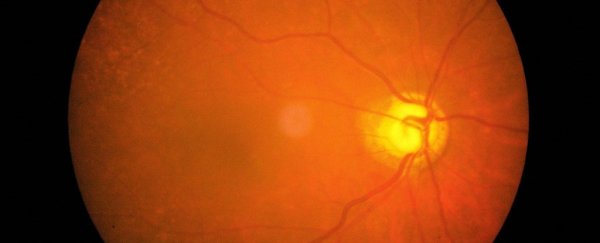Scientists have found a new way to regenerate damaged optic nerve cells taken from mice and grown in a dish. This exciting development could lead to potential eye disease treatments in the future.
Damage to full-grown nerve cells causes irreversible and life-altering consequences, because once nerve fibres mature, they lose their ability to regenerate after injury or disease. The new experiments show how activating part of a nerve cell's regenerative machinery, a protein known as protrudin, could stimulate nerves in the eye to regrow after injury.
With more research, the achievement is a step towards future treatments for glaucoma, a group of eye diseases which cause vision loss by damaging the optic nerve (that links the eye to the brain).
"What we've seen is the strongest regeneration of any technique we've used before," said ophthalmologist Keith Martin from the University of Melbourne in Australia.
"In the past it seemed impossible we would be able to regenerate the optic nerve but this research shows the potential of gene therapy to do this."
We have seen similar attempts to restore vision in mice and some promising results before.
In 2016, scientists were able to regrow a small fraction of retinal ganglion cells in adult mice by turning on a dormant growth switch, and showed these new nerve cells at the back of the eye reconnected to the right part of the brain as well.
And before that, a 2012 study also partially restored 'simple' vision to adult mice after regenerating nerves along the full length of the optic pathway.
This latest research is still in its early stages, and has focused on understanding precisely how protrudin, a scaffolding molecule present in sprouting neurons, works to support cell growth.
It's always good to have a few options because there's no guarantee that promising results in mouse studies translate to safe and effective treatments for people.
In this study, scientists stimulated nerve cells of the eye to produce more protrudin, to see if this would help protect the cells from damage and even repair after injury.
First, in optical nerve cells cultured in a dish, the researchers showed that ramping up protrudin production stimulated regeneration of nerve cells that had been cut by a laser. Their spindly axons regenerated over longer distances, and in less time, than untreated cells.
 (Petrova et al., Nature Communications, 2020)
(Petrova et al., Nature Communications, 2020)
Above: A regenerating and a non-regenerating axon over 14 hours after laser axotomy. Red arrows at 0 h post injury show the point of injury; white arrows trace the path of a regenerating axon.
Next, adult mice were administered gene therapy - an injection straight into the eye - carrying instructions for nerve cells to bump up protrudin production. As painful as that sounds, this procedure can actually be done safely in people (the injection, that is, not yet the gene therapy).
A few weeks and one optic nerve injury later, these mice had more surviving nerve cells in their retinas than the control group did.
In one final experiment, the scientists used whole retinas from mice removed two weeks after giving them a protrudin boost, to see if this treatment could prevent nerve cells from dying in the first place.
The researchers found, three days later, that stimulating protrudin production had been almost "entirely neuroprotective, with these retinas exhibiting no loss of [retinal] neurons," the researchers wrote in their paper. Usually, about half of retinal neurons removed in this way die within a couple of days.
"Our strategy relies on using gene therapy – an approach already in clinical use – to deliver protrudin into the eye," said Veselina Petrova, a neuroscience student at the University of Cambridge.
"It's possible our treatment could be further developed as a way of protecting retinal neurons from death, as well as stimulating their axons to regrow."
It's important to note that we're a long way from restoring vision in a person: Regenerating cells in a dish is great, but we don't know from these experiments if giving a mouse more protrudin would restore its sight.
One of the next steps will be to look at whether protrudin has the same protective effect in cultured human retinal cells.
The scientists publishing this work also plan on studying whether the same technique could be used to repair damaged neurons after spinal cord injury.
"Treatments identified this way often show promise in the injured spinal cord," said Petrova. "It's possible that increased or activated protrudin might be used to boost regeneration in the injured spinal cord."
The research was published in Scientific Reports.
